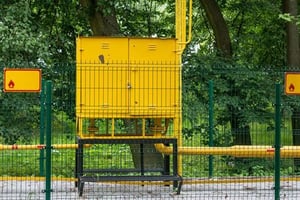
Our panel agrees that the "best" confined space gas detectors for confined spaces does not come from any one manufacturer. It's the instrument that best fulfills the requirements for your operational application(s). Price must not be the sole consideration, as many features of the instrument should be determined:
- Sensor Selection - Does the instrument offer the selection of sensors needed for the known and potential atmospheric hazards associated with the confined spaces to be monitored?
- Diffusion or Sample-Draw Method - Determine the best function of gas detecting for your application. Diffusion instruments utilize natural air currents to bring the atmosphere being sampled to the instrument. They are often preferred for work area monitoring. Sample-Draw kits enable diffusion-type instruments to sample from remote locations. This is useful for below ground stratification of gases tested such as down a manhole or utility vault.
- Classification for Intrinsic Safety - Instruments purchased for use in a confined space, hazardous location, or other environment characterized by the potential presence of flammable or explosive gases, should carry a Classification of Intrinsic Safety.
- Durability - Is the instrument durable enough to take the abuse it is likely to receive in the application? How well is it protected from the effects of radio frequency interference (RFI) and electromagnetic interference (EFI)? Consideration should be given to the effects of high and low temperatures on the design, and resistance to water and dust.
- Source of Power - Instruments today are powered with Alkaline batteries, rechargeable battery packs, or both. Considering the pros and cons of each should be a consideration.
- Alarms - The majority of new detectors offer three types of alarm function; audible, visual and vibratory. Alarms should be loud, highly visible and sufficient to grab the attention of the instrument user.
Consideration of the package of included accessories, instrument warranty, calibration frequency, available technical service, and overall operability of the instrument being evaluated will help ensure a suitable product selection.
Note: Many manufacturers offer a "field evaluation" period prior to purchase... there is no substitute for hands-on experience!






